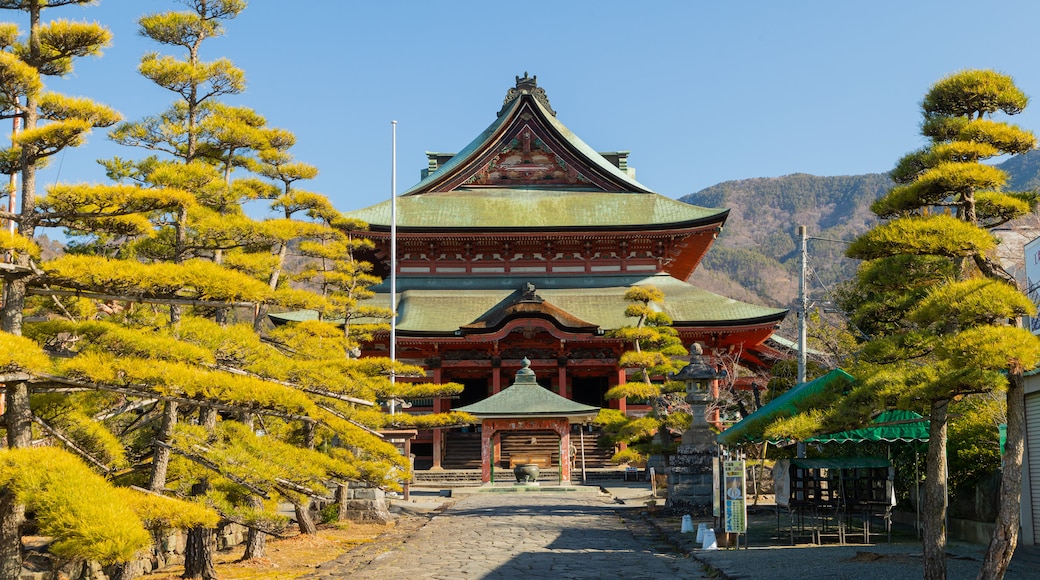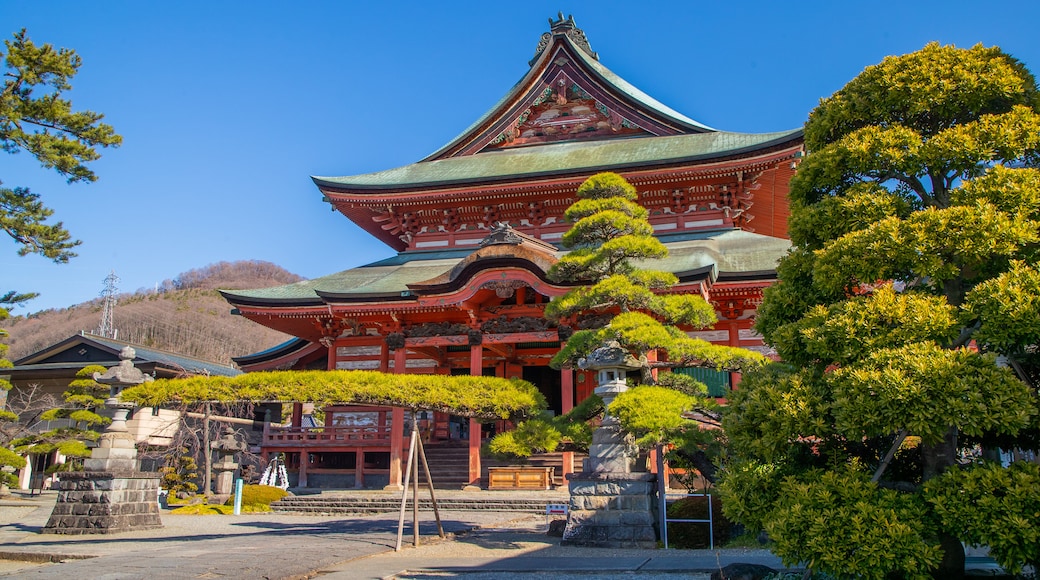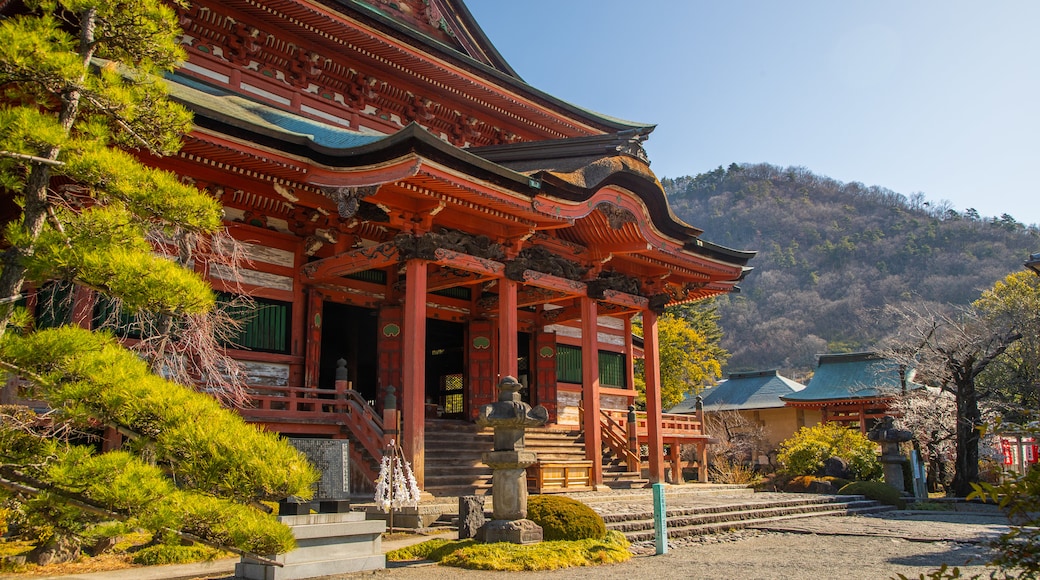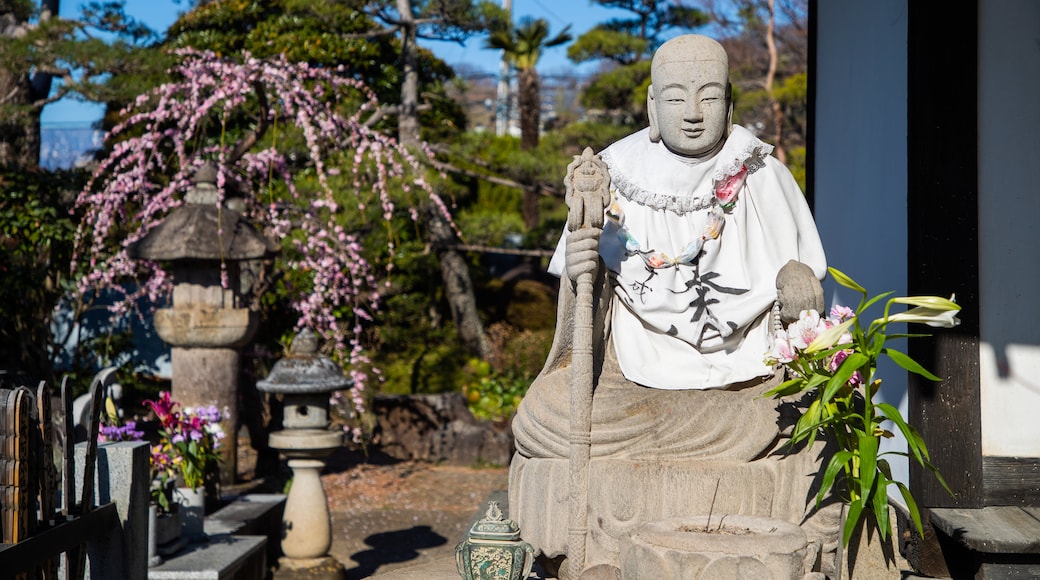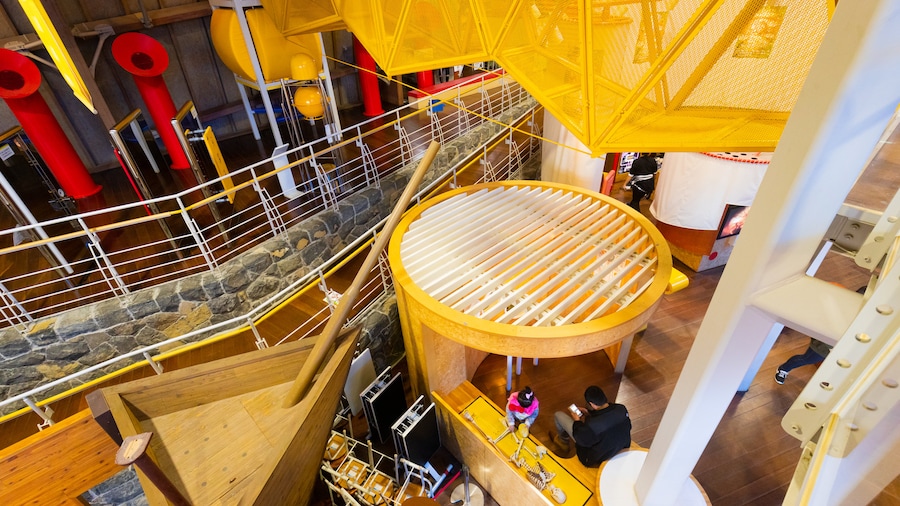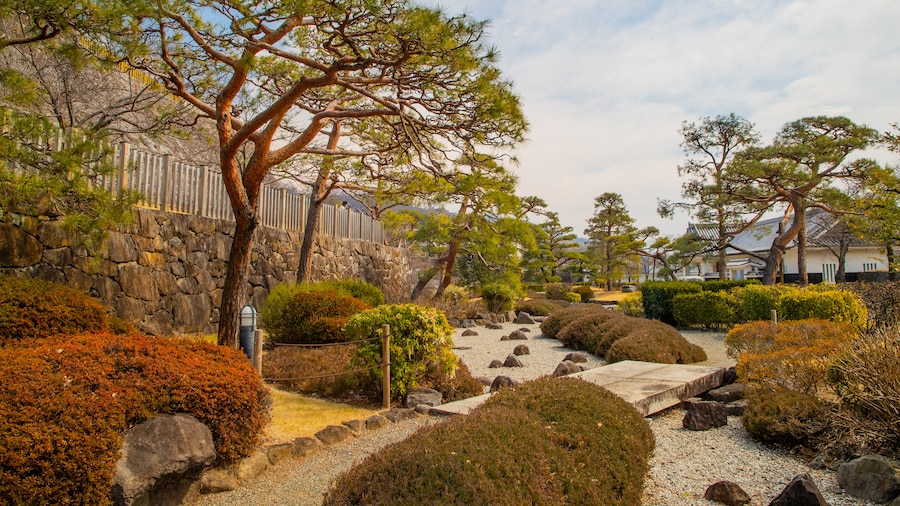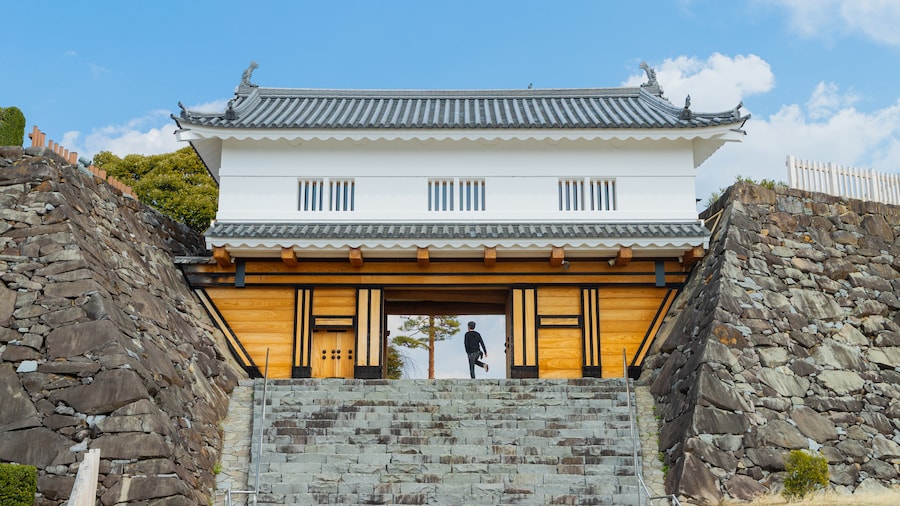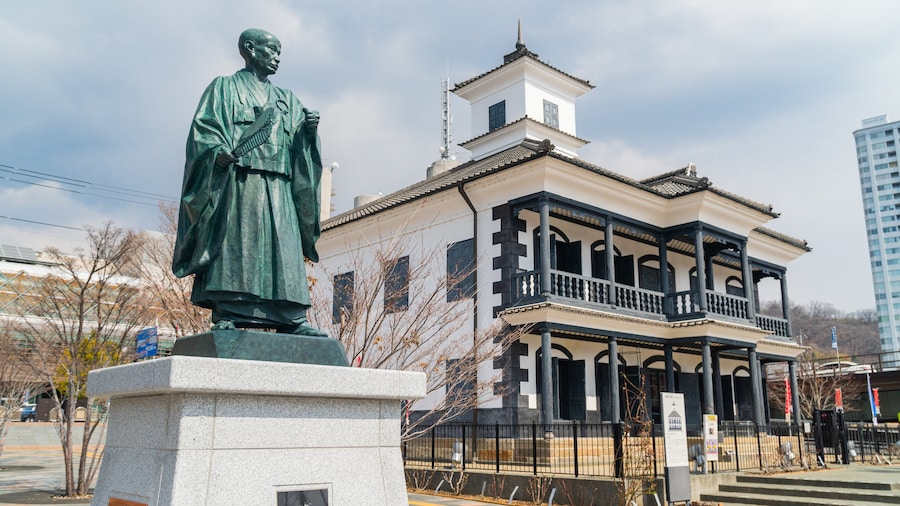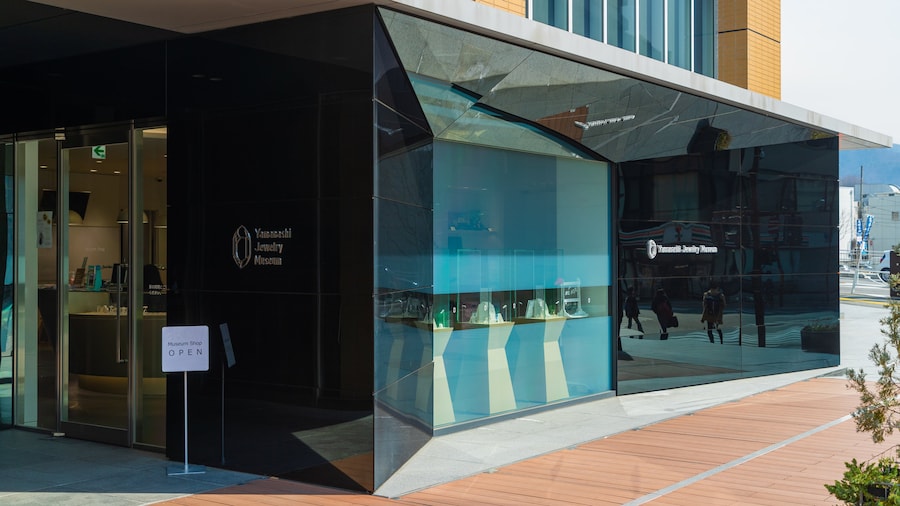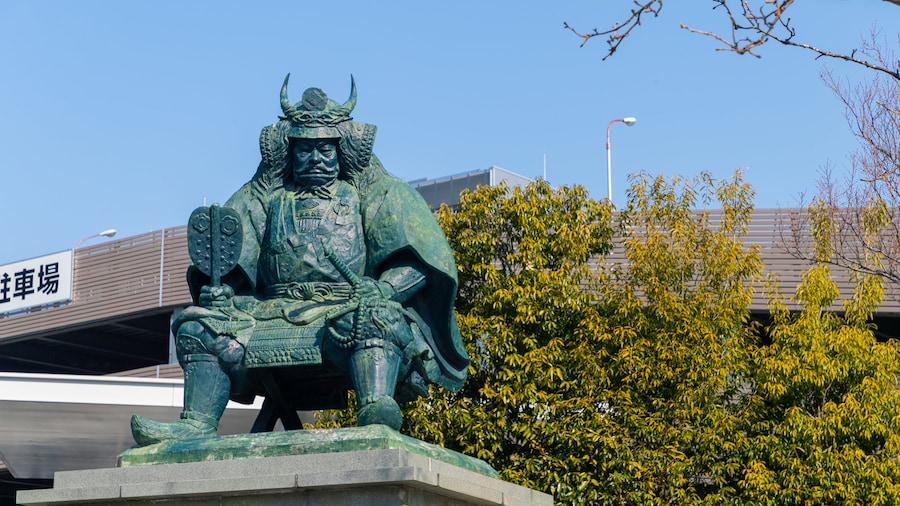Established by the great commander and writer Takeda Shingen, Kai Zenkoji Temple is an important place to visit to learn about the history of the Kofu region. The war lord was concerned that the Buddhist treasures then being stored in a nearby Nagano templewould be lost in battle, so he relocated them to the Kai temple in 1558 to prevent their loss. Today, see the Sanmon Gate and the Main Hall, thought to be the largest wooden structure in Eastern Japan. Both are designated asImportant Cultural Properties.
Once inside the main altar area, gaze upward to see the giant two-headed dragon carving on the ceiling. Legends say that if you stand in a particular spot and clap your hands, you will hear the dragon weep. Look for helpful footprints on the floor to know where to stand.
From here, head farther back through the main hall and into the basement and a pitch-black underground passageway. A temple monk will provide help if needed. Search for the so-called“key to paradise,” which is saidto grant salvation and wishes to anyone who touches it. Behind a locked door is asacred Buddhist image, which is revealed to the public just once every seven years during the Gokaicho festival.
After you’ve seen the key to the treasure and heard the dragon cry, continue your visit. Head next door to the small Homotsukan Treasure Museum. Among its collection are statues from the Kamakura period (1192-1333), and wooden Buddha statues from the Heian period (710 - 1185). While you’re in the museum area, turn around and you’ll be able to have an iconic view of Mount Fuji.
Walk to the Kai Zenkoji Temple in 10 to 15 minutes from the Zenkoji Station on the JR Minobu Line. It’s a 15-minute walk from the Sakaori Station on the JR Chuo Line. Parking is available. The temple is open every day.
